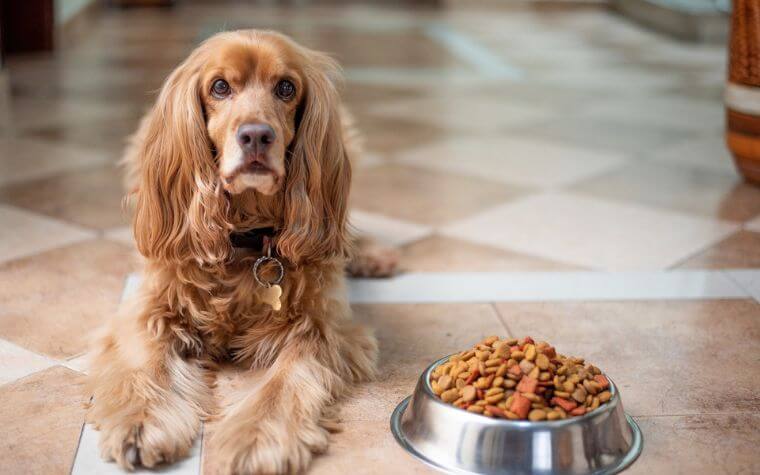If you are a dog owner, then you must know that healthy Dog’s Digestion is very essential for their health. Hence, it is very important that you be aware that you are feeding the correct diet to your dog and know the nutrients that they are receiving through their food. In this blog, we inform you how to dog’s digestive system is healthy.
So, it is necessary when you are feeding your dog to know how much time it takes to digest. This gives you a clear understanding of what you should give your dog to eat.
The dog’s digestive system includes organs like the mouth, esophagus, stomach, liver, intestines, rectum, pancreas, and anus. The Dog’s Digestion system process starts when your dog eats food with their mouth and begins to chew.
The saliva breaks down the food in the mouth and then, after swallowing, it breaks down in the stomach. It absorbs all the nutrients in the intestines and then eliminates the waste. Digestion provides nutrients and aids in the maintenance of body balance.
You can easily monitor the dog’s health by keeping an eye on its digestion process. In this blog, you will read the complete information about the Dog’s Digestion system and how to keep it healthy.
Also Read:- A Gateway to Sneak Peak into Your Dog’s Heart
How Do Dog’s Digestive Systems Work?

1. The Teeth:
Dogs’ teeth structures are designed to cope with the type of foods that they naturally eat. Dogs have large teeth so that they can bite, tear up food, chew, and easily break down meat and bones.
The number of a dog’s teeth depends upon its age. Puppies have 28 teeth, and adult dogs have around 42 teeth.
2. The Mouth:
A dog’s digestive process begins in the mouth. The teeth on the upper and lower jaws break down the food into small parts. And the salivary glands produce saliva which helps to lubricate the food.
3. The Esophagus:
When your dog swallows food, it passes through the esophagus into the stomach. This is a muscular tube that connects your mouth and stomach.
4. The Stomach:
When the food reaches the stomach, then the gastric juice present in the stomach like mucus, hydrochloric acid, pepsinogen, and the gastric lipase enzyme breaks down the food further.
5. The Small Intestine:
In the small intestine, digestion and absorption of nutrients in the body takes place. The duodenum in the small intestine is responsible for digestion, and the jejunum and ileum in the small intestine are responsible for absorption.
6. The Large Intestine:
The large intestine is a long muscular tube. The food which is not used by the body or which is not absorbed in the small intestine then goes to the large intestine. The dog passes the stools to remove all the waste products from the body.
Also Read:- Fascinating and Amazing Facts About Dogs’ Tongue That Dog Lovers Must Know
What Factors Influence a Dog’s Digestive System?

Normally, it takes 6 to 8 hours for a dog to digest. But, it also depends upon the speed at which your dog processes their food.
The quality of the food also plays a very important role in the dog’s digestion. Other factors which influence the dog’s digestive system are as follows:
- Your Dog’s Age
- The dog’s size and breed
- Dog’s Diet
- It depends upon your dog’s activity level.
- Your dog’s health condition
- what kind of food you’re giving your dog
- How digestible is the food?
- Your dog’s hydration level
All these above factors affect your dog’s digestive system. Hence, it is very important that you carefully select your dog’s food.
What Should You Observe While Selecting Your Dog’s Food?

- When you select your Dog’s Digestion system food, just ensure that the food that you have chosen is made by a reputed manufacturer. Don’t forget to check the review of the food online.
- Check the food’s expiry date before purchasing.
- Their diet must contain the meat of beef, chicken, lamb, or turkey.
- Make sure to store your dog’s food in a cool and dry place in a sealed container.
- Feed your dog a homemade diet if your dog’s dietary requirements are not fulfilled by commercial foods.
- Remember, you should always feed your dog according to its weight, adult maintenance, activity level, lactation, body requirement, and age.
- If you change your dog’s diet, then you must see your dog’s stool, weight, and coat.
- Always feed the adult dog twice a day and just watch; they should take time to finish the bowl of food, at least 20 minutes.
- Always ensure that your dog drinks fresh and clean water in a clean bowl.
- Give your dog protein-rich food, as it is easier for dogs to digest.
- You should not give your dog ice cream, chocolate, almonds, and allium foods such as onions, garlic, chives, etc.
- Consult the vet about your dog’s proper diet. Your dog’s diet includes what type of protein, fiber source, and level of fats in the food; the quality and quantity of food.
Also Read:- Dog Tongue Color Chart: The Tongue Speaks More Than You Think
What are the Symptoms of Digestive Issues in Dogs?

Below are some of the Dog’s Digestion system symptoms which you will see in your dog if their stomach is upset.
- Vomiting
- Diarrhea
- Constipation
- A lack of appetite
- Weight loss.
- Dehydration
- Fever
- Increase the amount of gas in the stomach.
- Abdominal pain
- Distress or not feeling comfortable.
If you find any of the above symptoms in your dog, then immediately visit the vet for your dog’s health checkup.
Conclusion
For the proper functioning of your dog’s digestive system, you should feed your dog a balanced diet recommended by the vet. A diet must contain all the carbohydrates, proteins, vitamins, and a sufficient amount of water.
Feed your dog according to its weight, activity level, age, breed, and other health conditions. If you find any digestive issues in your dog’s stomach, immediately consult the vet.
